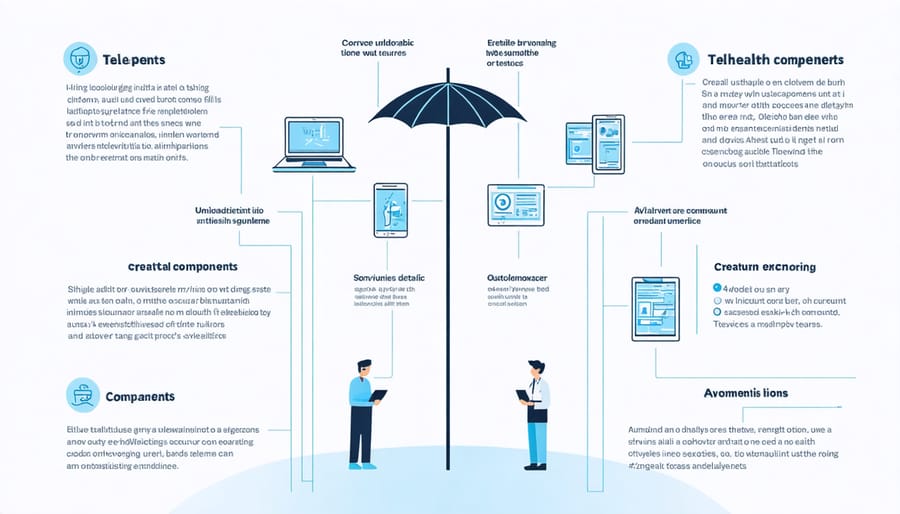In today’s rapidly evolving healthcare landscape, the terms “telemedicine” and “telehealth” are often used interchangeably, leading to confusion about their true meanings. While both involve delivering care remotely, there are key differences that set them apart. Telemedicine specifically refers to providing clinical services via secure video or phone consultations, allowing patients to receive treatment without visiting a doctor’s office. In contrast, telehealth encompasses a broader range of remote healthcare services, including patient education, remote monitoring, and provider training. As technology advances, these virtual care solutions have the potential to bridge the health gap in rural Canada and beyond, making quality care more accessible than ever before.
What is Telemedicine?

Benefits of Telemedicine
Telemedicine offers numerous benefits for patients seeking convenient, accessible healthcare. With virtual visits, you can consult with a doctor from the comfort of your home, saving time and eliminating travel costs. This is especially advantageous for those with mobility issues, busy schedules, or limited access to nearby clinics. Telemedicine also allows for quicker appointments and can be more cost-effective than in-person visits. Additionally, it enables you to maintain continuity of care with your regular healthcare provider, even if you’re away from home. By removing barriers to healthcare access, telemedicine empowers patients to take control of their health more easily.
Limitations of Telemedicine
While telemedicine offers numerous benefits, it also has some limitations. One major drawback is the lack of physical exams, which can be crucial for accurate diagnosis and treatment. Doctors may miss important visual cues or be unable to perform hands-on assessments. Additionally, technology issues like poor internet connections, software glitches, or user errors can disrupt virtual appointments. Some patients, especially older individuals, may struggle with the technology required for telemedicine. Privacy and security concerns around transmitting personal health information online can also be a limitation. Despite these challenges, telemedicine remains a valuable tool for improving healthcare access and convenience in many situations.
What is Telehealth?

Benefits of Telehealth
Telehealth offers numerous advantages for patients and healthcare providers alike. By enabling remote consultations, telehealth improves access to care, especially for those in rural or underserved areas. This convenience also leads to increased patient engagement, as individuals are more likely to seek care and follow treatment plans when barriers like travel are removed. Moreover, telehealth can lead to better health outcomes by facilitating timely interventions, closer monitoring, and improved adherence to care plans. Patients can also benefit from the expanded range of services available through telehealth, such as virtual fitness apps and mental health support, ultimately promoting a more holistic approach to wellness.
Challenges in Telehealth
Privacy and security concerns are significant challenges in telehealth. Transmitting sensitive medical information online raises the risk of data breaches and unauthorized access. Lack of standardization across telehealth platforms can also lead to compatibility issues and inconsistent quality of care. Some patients may struggle with the technology or lack access to reliable internet, limiting their ability to utilize telehealth services effectively. Additionally, certain physical exams and procedures cannot be performed remotely, and the absence of in-person interaction may affect the patient-provider relationship. Addressing these challenges is crucial for the widespread adoption and success of telehealth.
Key Differences Between Telemedicine and Telehealth
While telemedicine and telehealth are often used interchangeably, they are not the same. Telemedicine specifically refers to the remote delivery of clinical healthcare services, such as virtual consultations, diagnoses, and treatment plans. On the other hand, telehealth is a broader term that encompasses all health-related services and information delivered through electronic communication technologies. This includes telemedicine, but also extends to non-clinical services like health education, patient monitoring, and provider training. In essence, telemedicine is a subset of telehealth, focusing on direct patient care, while telehealth covers a wider range of remote healthcare services and technologies. Both play crucial roles in improving access to care, reducing costs, and enhancing patient outcomes, but understanding their differences is important for effectively leveraging these innovative approaches to healthcare delivery. Telehealth’s broader scope includes elements essential for preventative health measures, allowing patients to transform your well-being through ongoing education and health monitoring.
Conclusion
In conclusion, while telemedicine and telehealth are closely related, they refer to distinct aspects of remote healthcare delivery. Telemedicine focuses on clinical services, while telehealth encompasses a broader range of remote health services, including patient education and provider training. As technology advances and the demand for convenient, accessible healthcare grows, both telemedicine and telehealth will likely play increasingly important roles in Canada’s healthcare landscape. By understanding the differences between these terms, Canadians can better navigate the evolving world of remote healthcare and make informed decisions about their health and well-being. As we look to the future, it is clear that telemedicine and telehealth will continue to shape the way we access and experience healthcare in Canada.

